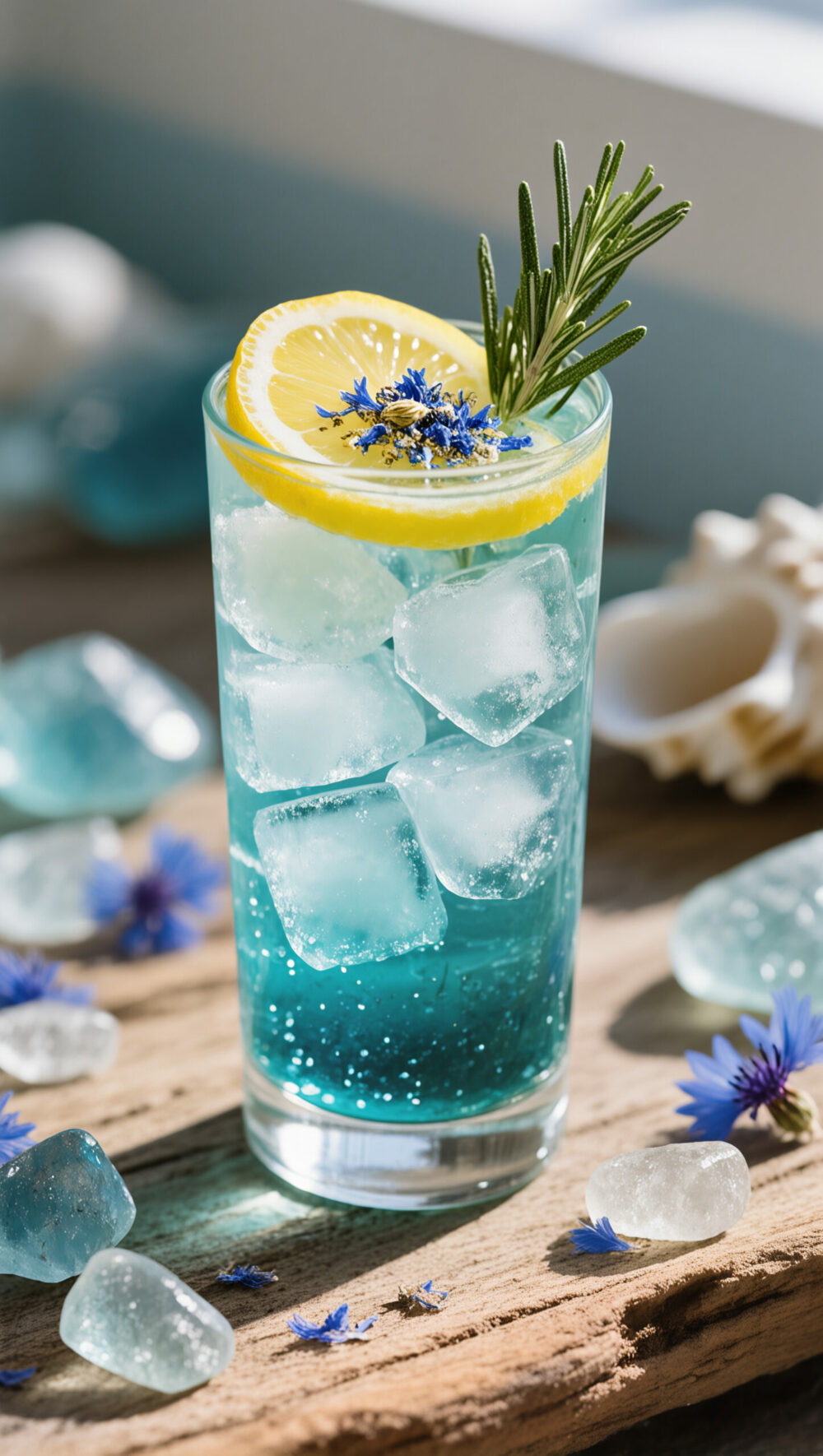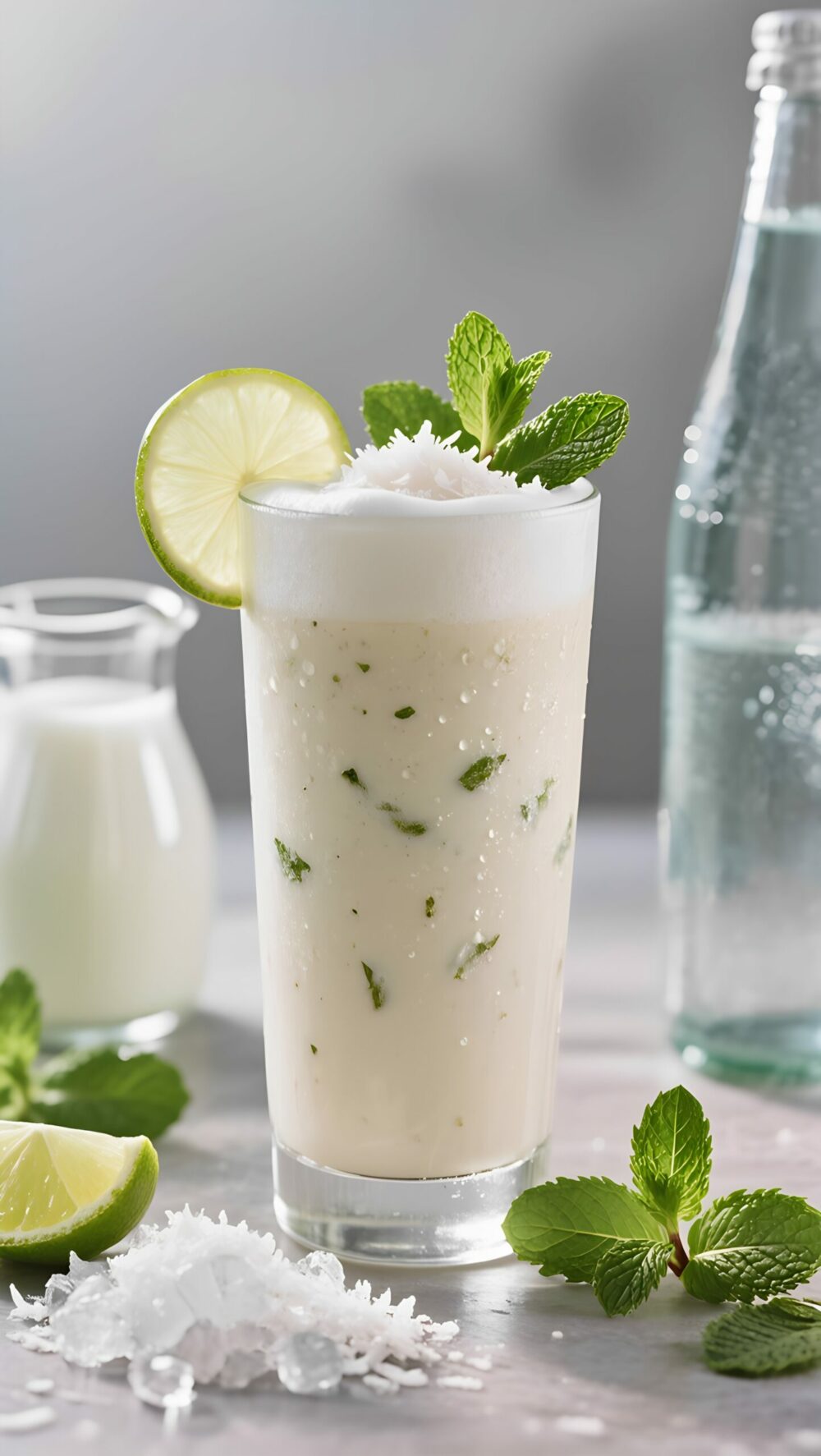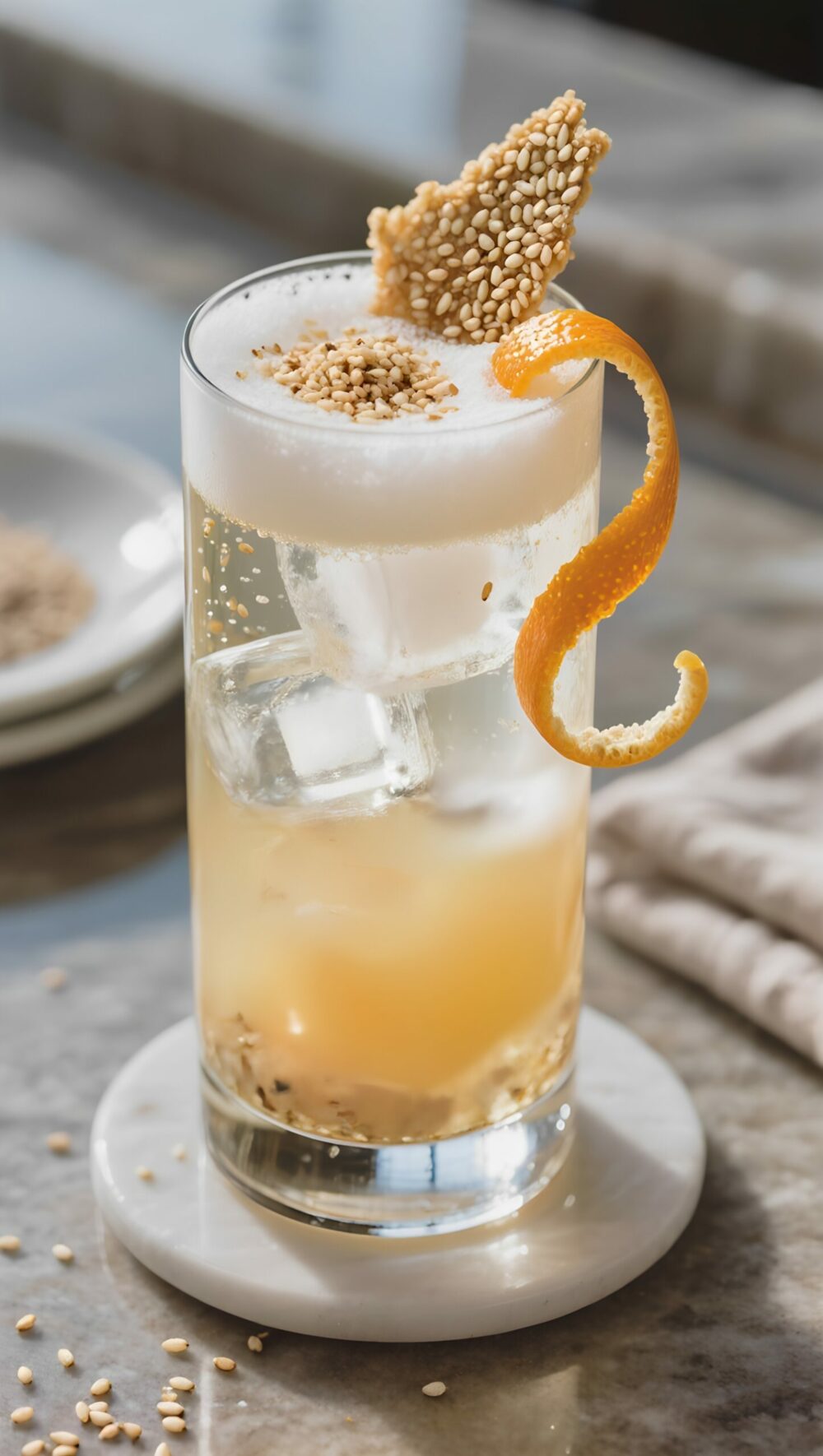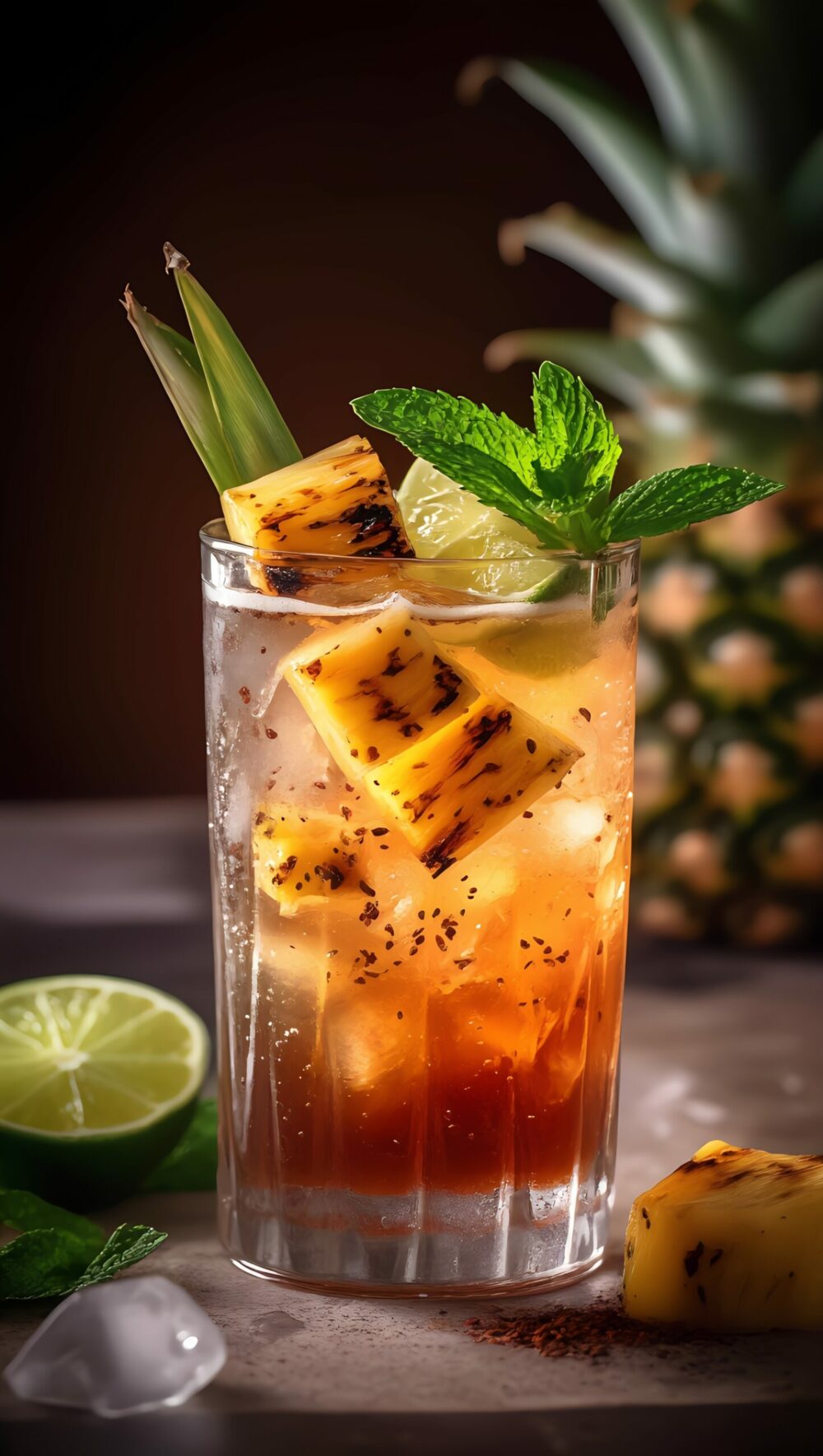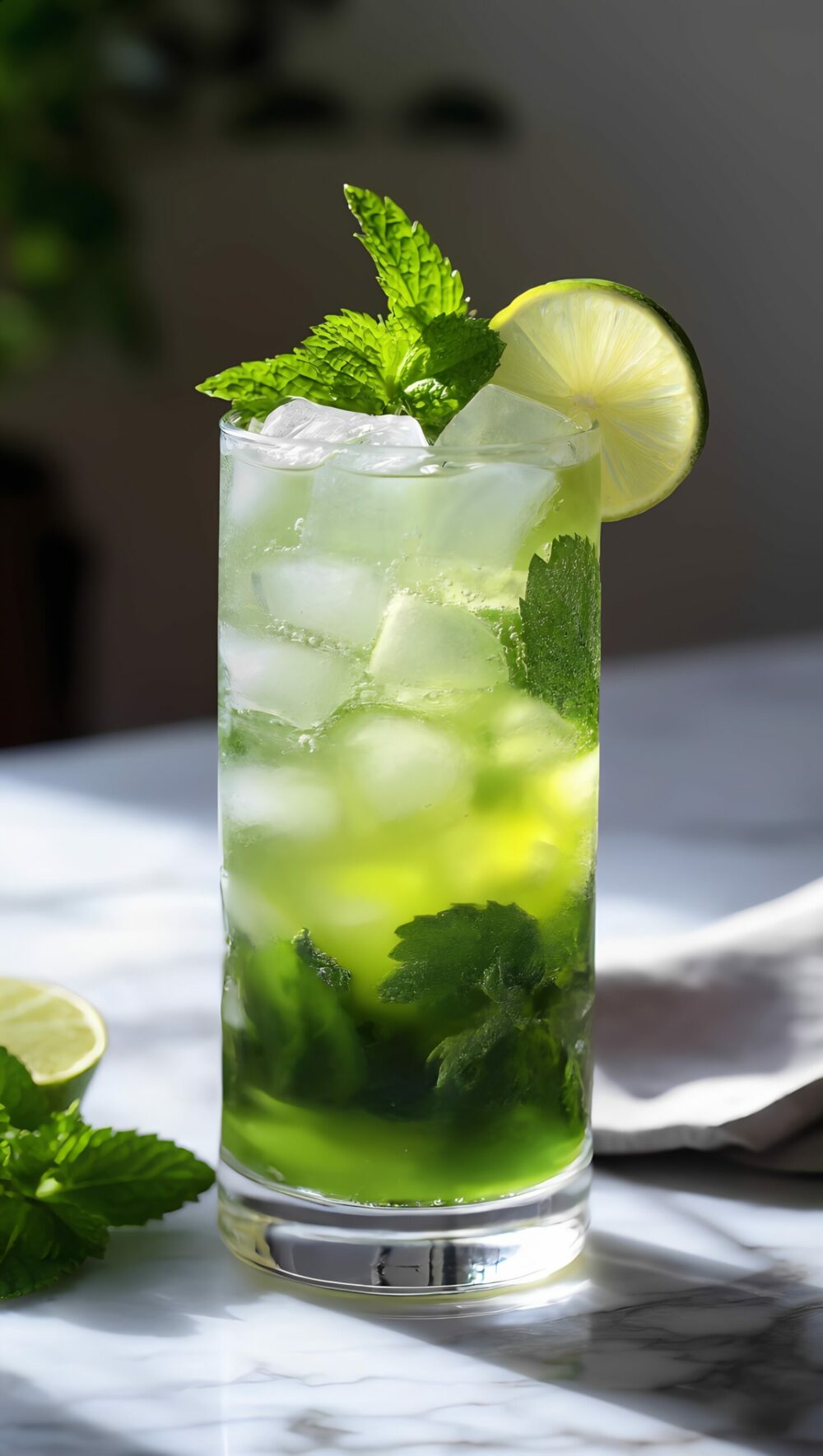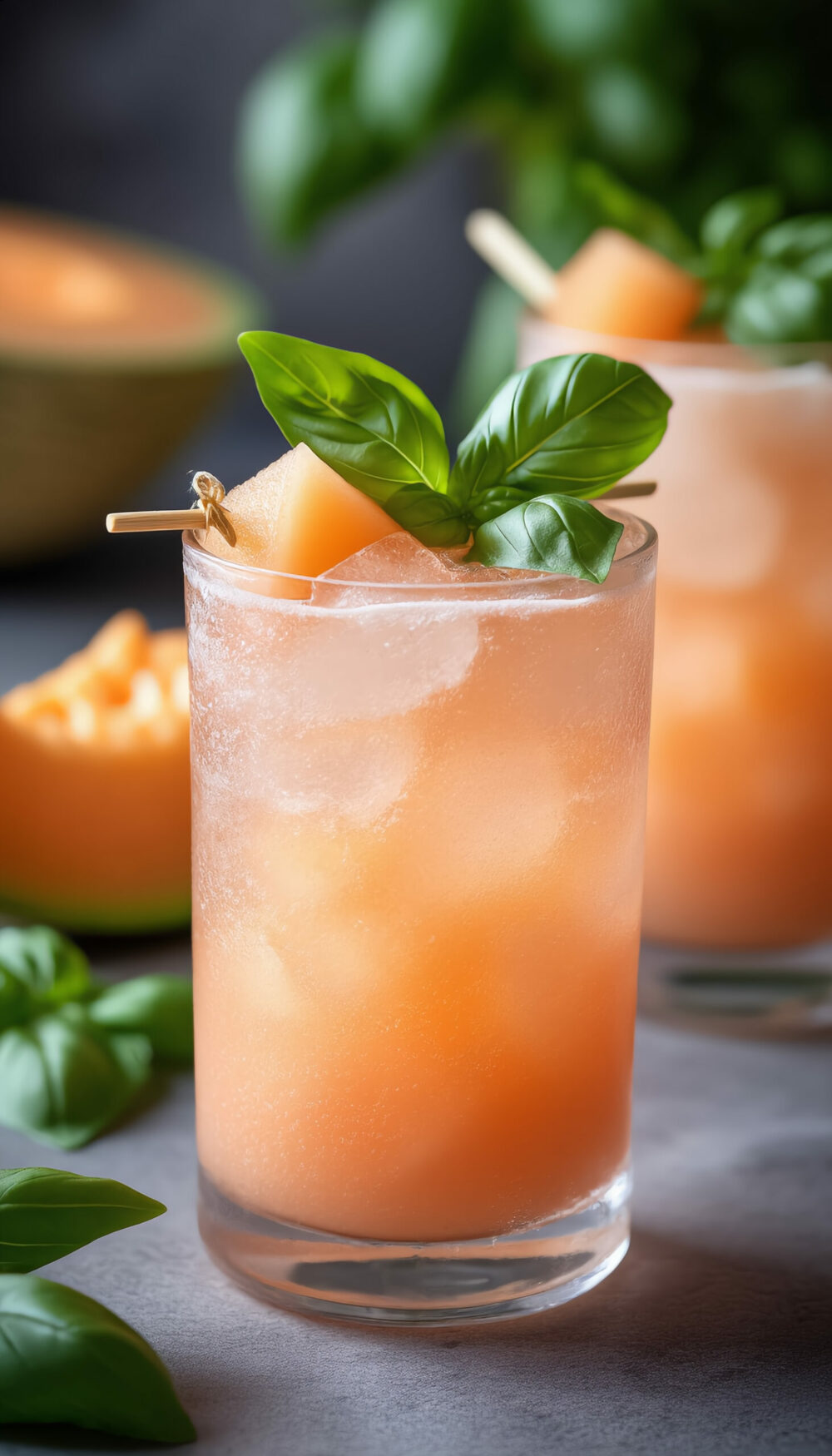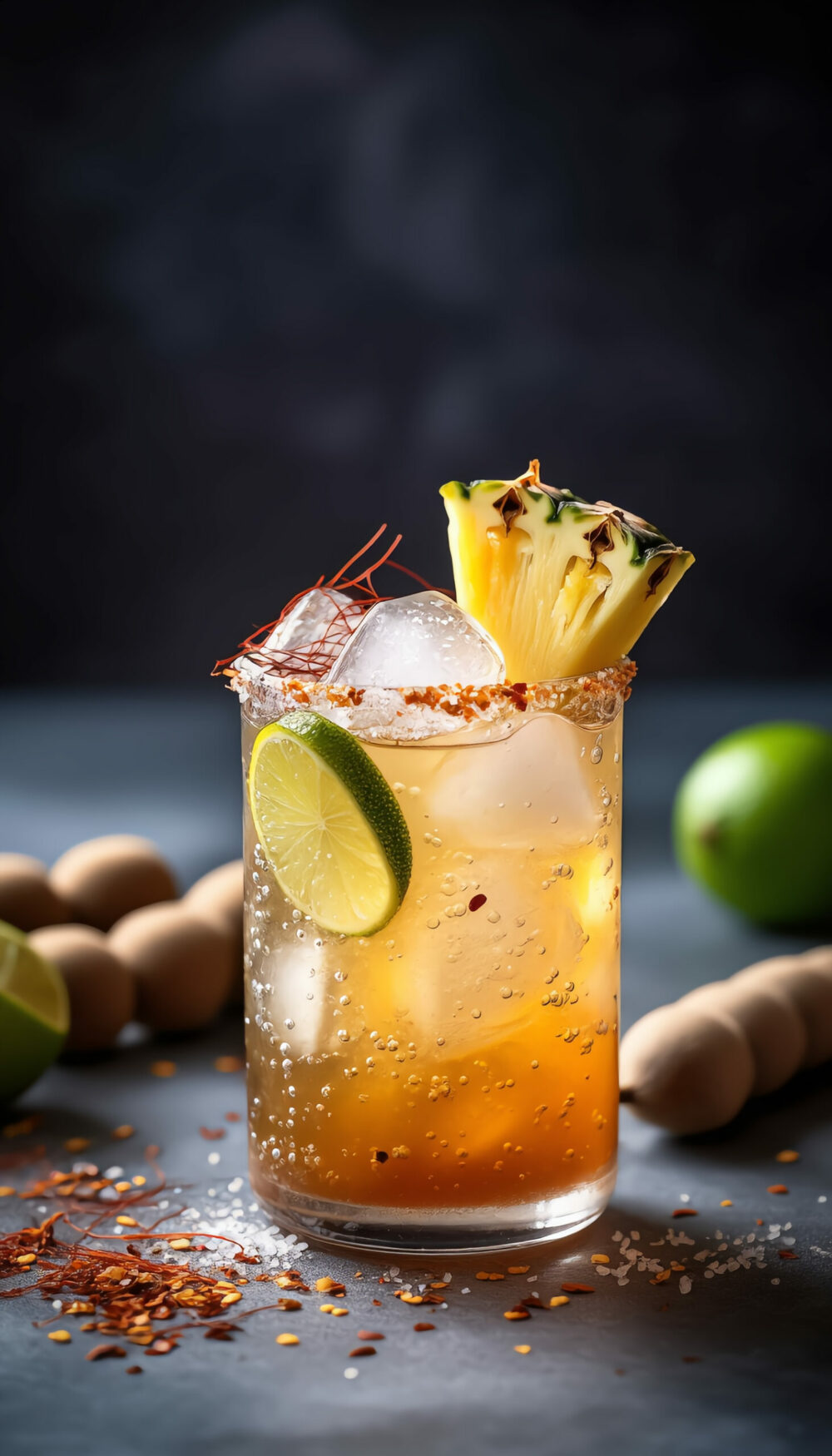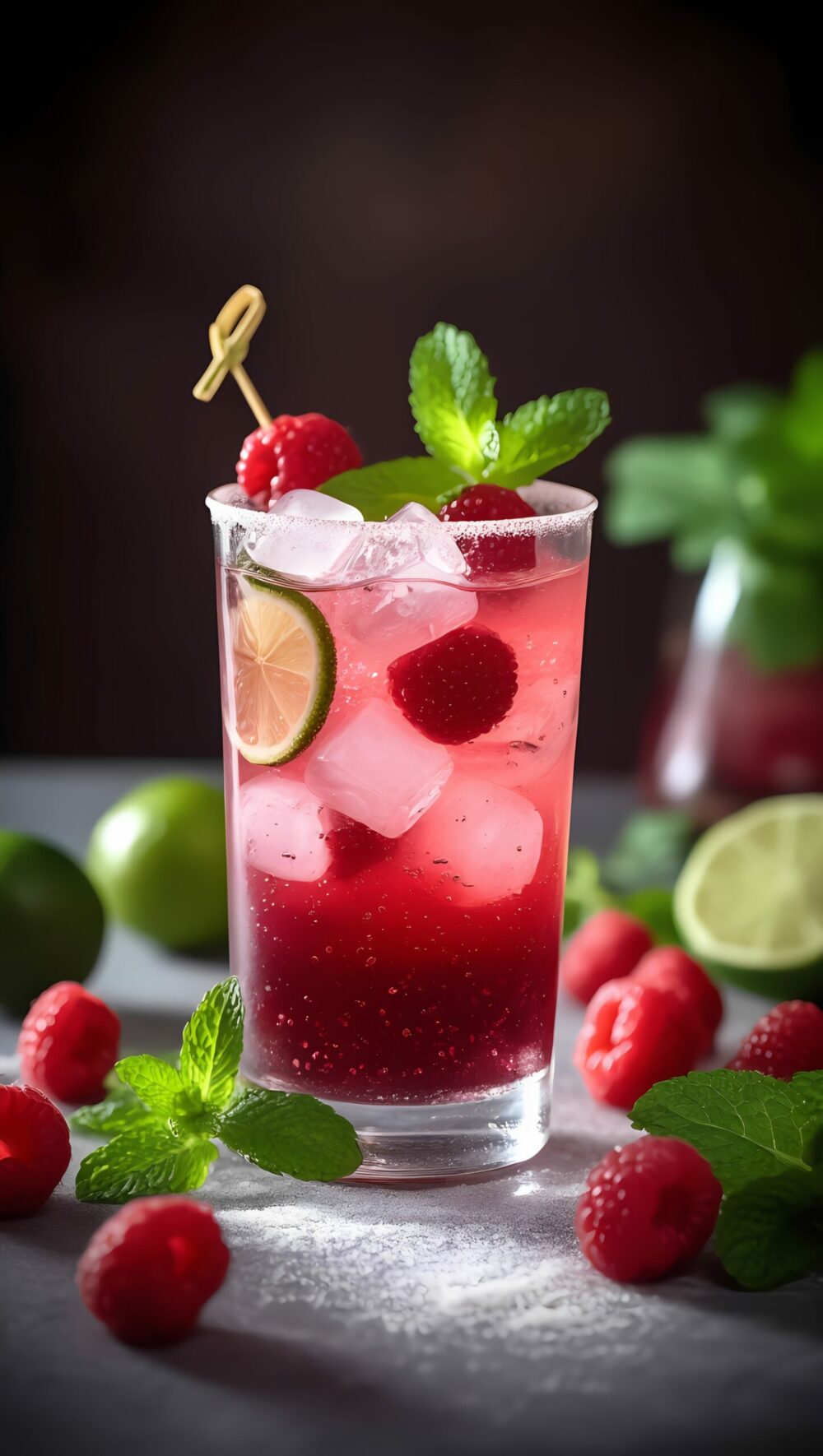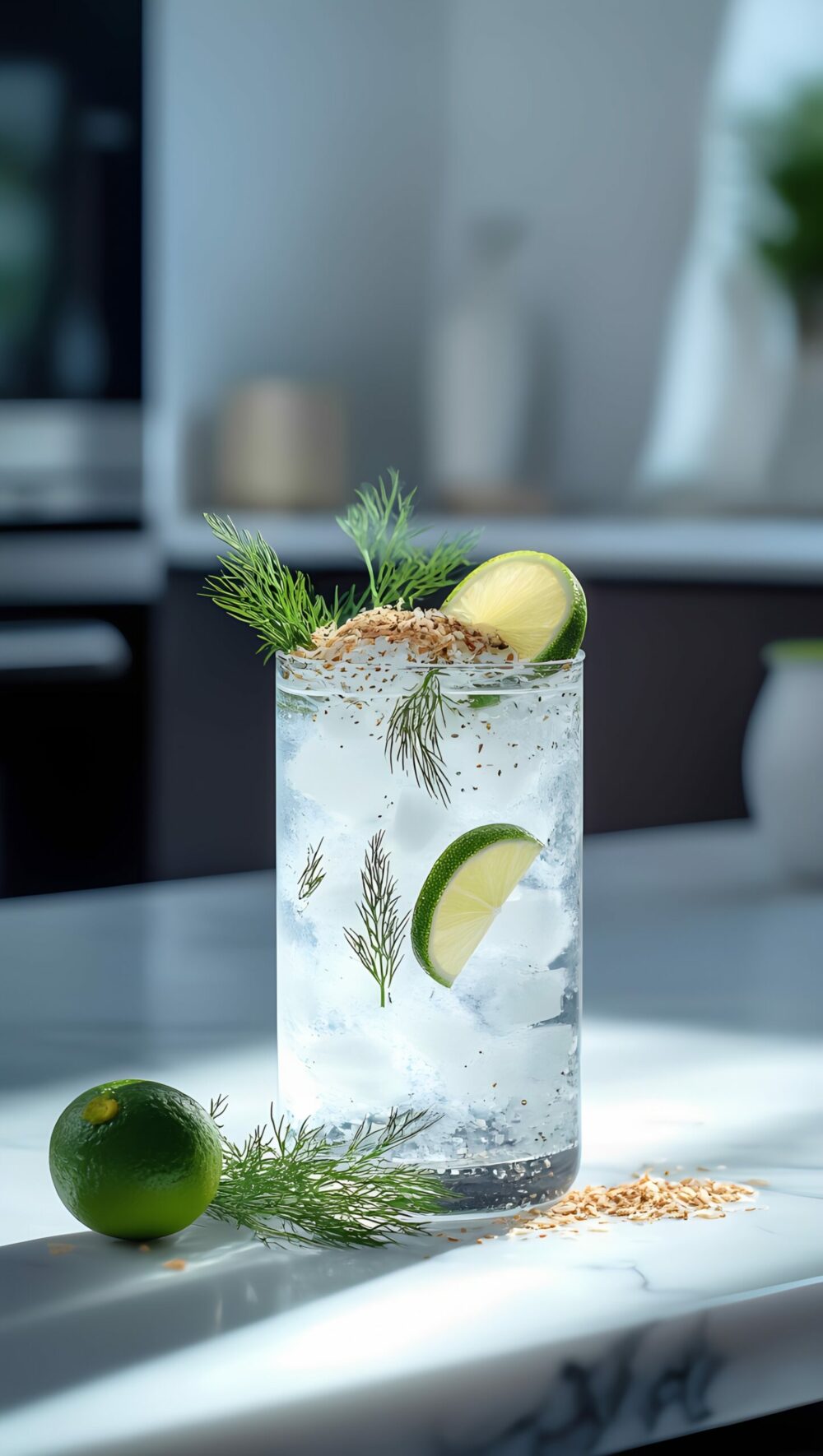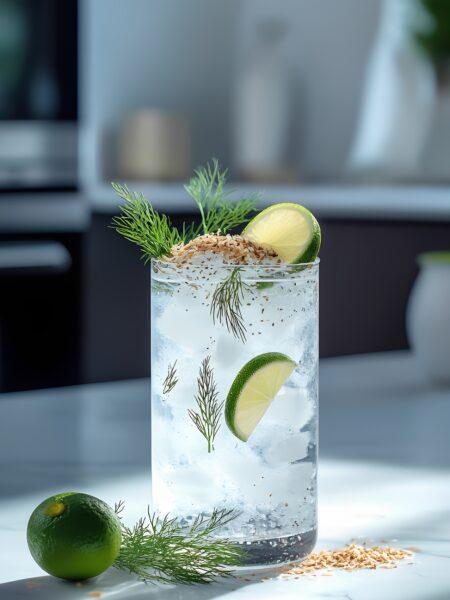Introduction
Salt‑kissed breezes, midday sun pirouetting on indigo waves, and the resinous hum of rosemary hedges—this lemonade captures them all in a single glass. Vividly cerulean from antioxidant‑rich blue spirulina and laced with Mediterranean herb perfume, Rosemary Blue Ocean‑ade hydrates like a natural sports drink yet dazzles like seaside fireworks. It is low in sugar, rich in electrolytes, and endlessly photogenic: a mocktail that quenches thirst and feeds wanderlust in equal measure.
The Origins of Lemonade & Herb‑Tinted Electrolyte Elixirs
Lemon‑and‑water pairings have sailed through history since medieval Egypt, where qatarmizat—a honey‑lemon cordial—was prized for cooling the body in desert heat. Centuries later, sailors added citrus to ward off scurvy and salt to replace sweat‑lost minerals on long voyages. Rosemary, meanwhile, has roamed Mediterranean cliffsides as both kitchen staple and apothecary star, praised for aiding memory and mood. Blue spirulina—phycocyanin extracted from freshwater algae—is the newest voyager, storming smoothie bowls and wellness cafés with its electric hue. Rosemary Blue Ocean‑ade braids these timelines: a coastal herbal infusion, a sailor’s electrolyte draft, and a 21st‑century super‑pigment in one futuristic yet familiar lemonade.
Unique Ingredients That Shine
Fresh rosemary delivers piney, lemon‑adjacent oils that reinforce citrus without redundancy. Blue spirulina not only paints the drink with deep‑sea saturation but also contributes phycocyanin, a potent antioxidant linked to reduced oxidative stress. Celtic sea salt slides in just enough sodium and trace minerals to replace what the sun steals from sweat, while raw honey or monk‑fruit syrup provides a gentle lift in sweetness without the glucose roller coaster of refined sugar. Filtered water supplies a blank canvas, letting herb and ocean pigment sing.
Techniques That Maximize Refreshment
A gentle 200 °F rosemary infusion coaxes essential oils while sidestepping bitterness, then rapid chilling locks aroma inside a crisp botanical snapshot. Whisking spirulina into the cooled base prevents pigment clumping—no one wants blue freckles floating atop their mocktail. Pre‑chilling all liquids and ice below 40 °F slows color shift (spirulina darkens as it warms) and preserves rosemary’s volatile terpenes. Finally, a slow theatrical pour around ice encourages swirling ombré gradients that mesmerize both palate and camera lens.
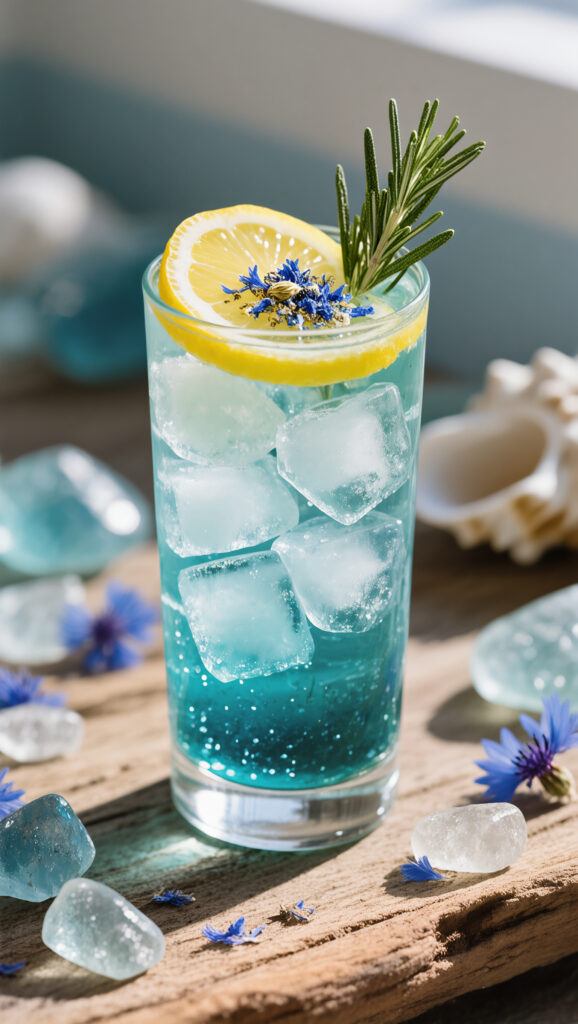
Rosemary Blue Ocean-ade – Electrolyte Rich Lemonade
Description
Vivid blue lemonade featuring rosemary infusion, blue spirulina, and sea‑salt electrolytes
Ingredients for Rosemary Blue Ocean-ade
Main Ingredients
For Garnish
Instructions
Preparation of Ingredients
-
Gather Your Mise‑en‑Place
Lay out water, lemon juice, spirulina, sweetener, rosemary, sea salt, ice, and garnishes on a cool countertop.
Preassembly minimizes the time delicate spirulina spends exposed to light, preserving its brilliant azure tone. -
Infuse the Rosemary
In a small saucepan, combine 4 ounces of the filtered water and the rosemary sprigs; heat to a gentle simmer at 200°F for 5 minutes, then remove from heat.
Low‑temperature infusion extracts fragrant oils without drawing out woody tannins that could cloud the drink. -
Cool the Infusion
Let the rosemary water stand for 10 minutes, then discard sprigs and chill the liquid completely.
Rapid chilling locks in green aroma while preventing bacterial bloom.
Assembly of the Mocktail
-
Blend the Blue Base
Whisk chilled rosemary infusion with remaining filtered water, lemon juice, blue spirulina, honey or monk‑fruit, and sea salt in a pitcher until uniformly turquoise.
Dissolving spirulina in cool liquid avoids clumping and delivers an even ocean gradient. -
Ice the Glasses
Fill four 10‑ounce glasses two‑thirds with clear ice cubes.
Plenty of ice keeps the pH‑sensitive spirulina from shifting color as it warms. -
Pour and Watch the Swirl
Divide the blue lemonade evenly among glasses, pouring slowly to create cascading color ribbons around the ice.
A lazy pour promotes natural ombré effects ideal for slow‑mo social reels. -
Garnish and Serve
Nestle a lemon wheel and rosemary tip atop each glass; sprinkle blue cornflower petals if using and serve immediately.
Present within two minutes—the volatile pine‑citrus bouquet peaks right after garnish meets liquid.
Note
- For deeper electrolyte support, replace half the filtered water with chilled coconut water rich in potassium.
- Blue spirulina fades under UV; serve indoors or shadowed patios to keep color vibrant for photos.
- Swap lemon juice for yuzu or Meyer lemon during late‑winter citrus season to change aromatic nuance.
- Freeze rosemary sprigs into ice cubes a day ahead for a suspended‑herb visual effect.

